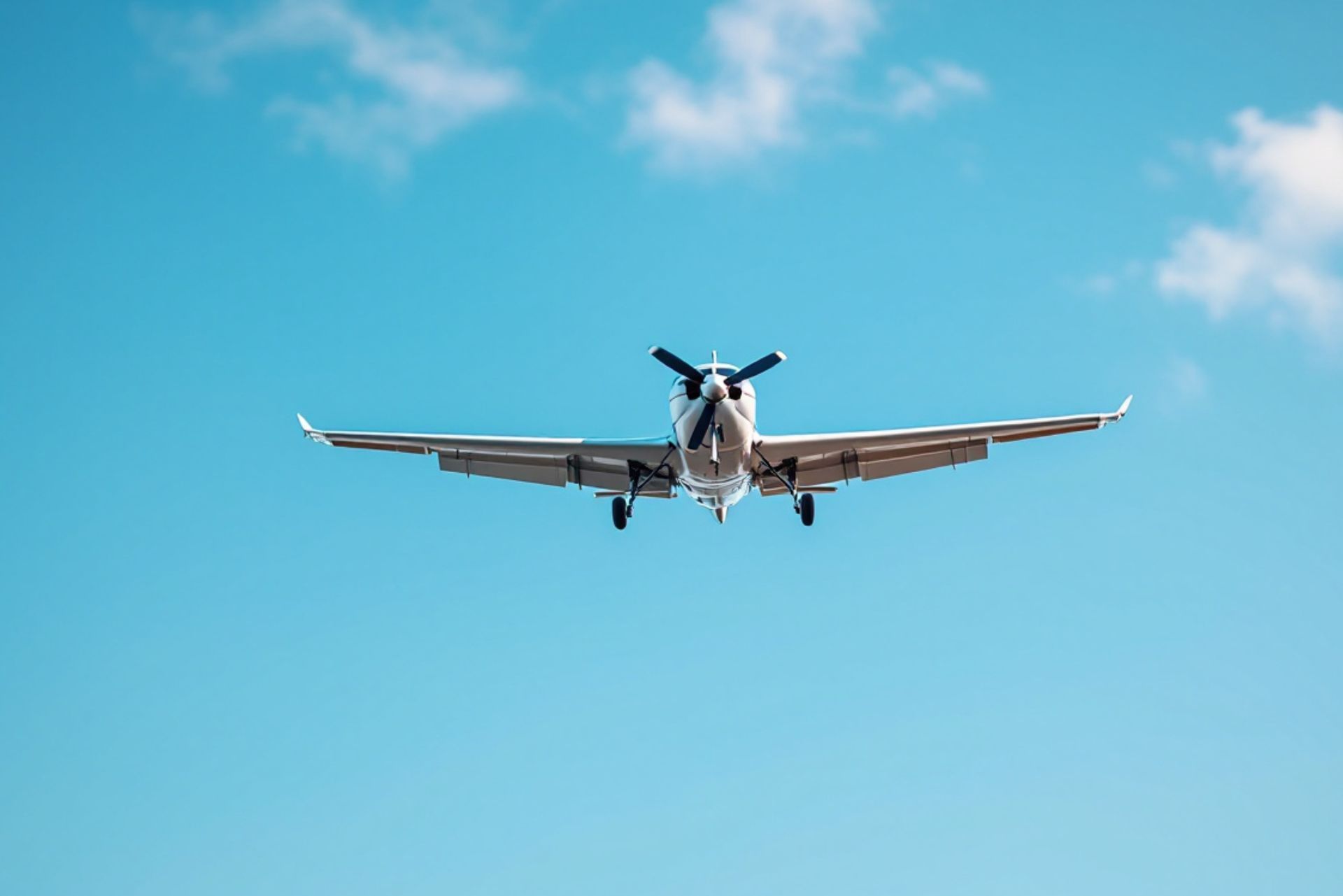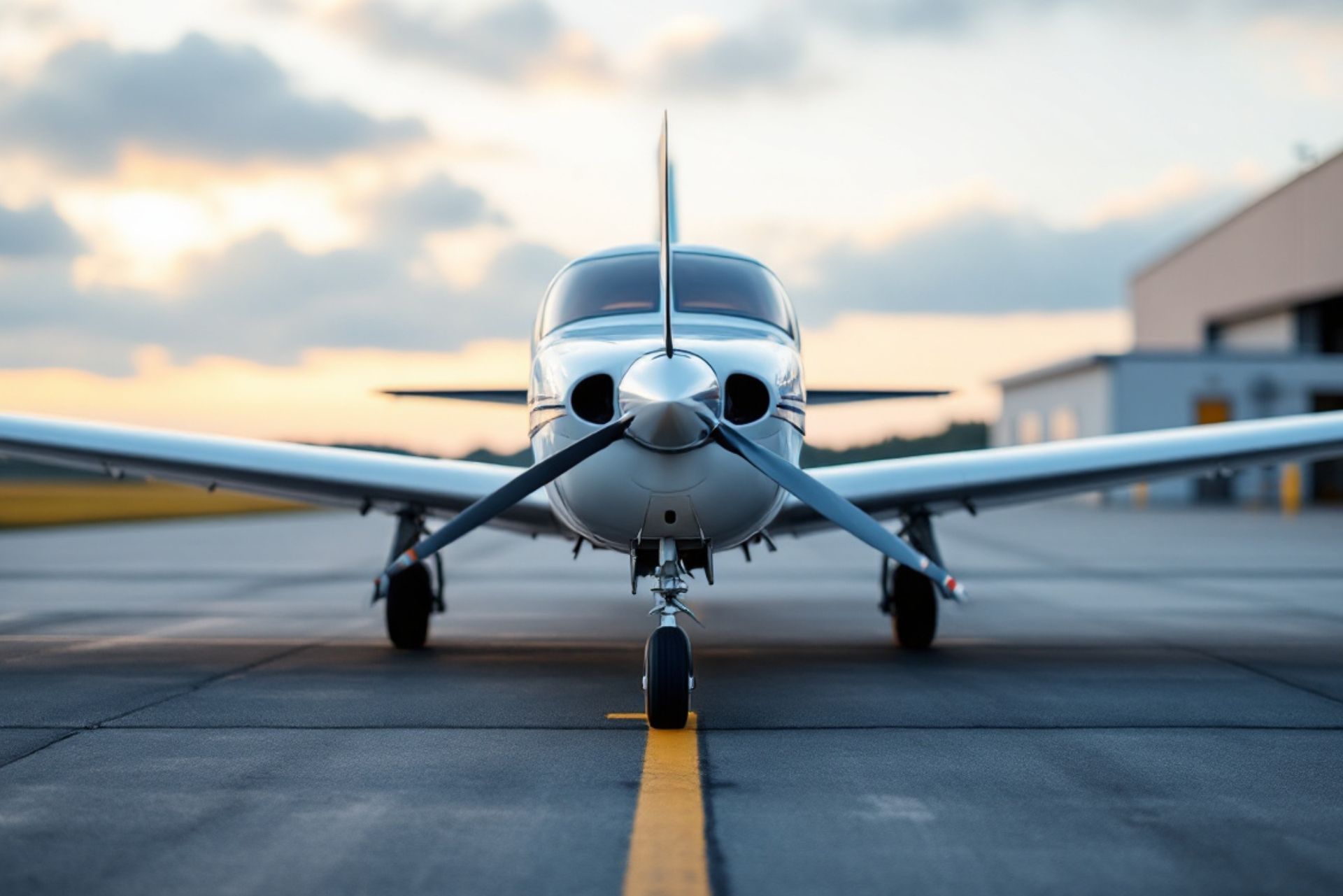Top 3 Recommended Business Policies
Index
Contact Us
Aviation insurance is an essential aspect for anyone involved in aviation, whether you are an aircraft owner, a pilot, or a business utilizing aircraft for operational purposes. In Maryland, like many other states, understanding the nuances of aviation insurance is key to protecting yourself, your investment, and your passengers. This guide aims to provide you with a comprehensive overview of aviation insurance and its particularities in Maryland.
Understanding the Basics of Aviation Insurance
What is Aviation Insurance?
Aviation insurance is a specialized form of insurance designed to cover the unique risks associated with flying and owning aircraft. It provides protection for both the aircraft itself and third-party liabilities that may arise during operations. This coverage can include various components such as liability insurance, hull insurance, and more, tailored to the needs of the policyholder. Hull insurance typically covers physical damage to the aircraft, whether on the ground or in the air, while liability insurance protects against claims made by passengers or third parties for bodily injury or property damage. Additionally, aviation insurance can also encompass coverage for ground operations, flight training, and even non-owned aircraft liability, making it a comprehensive safety net for aviation professionals.
Why is Aviation Insurance Important?
The importance of aviation insurance cannot be overstated. Accidents in aviation can lead to significant financial burdens, not just from repair costs but also from potential liabilities involving passengers and third parties. An adequate aviation insurance policy ensures that aircraft owners and operators can mitigate these financial risks, thereby protecting their assets as well as ensuring compliance with legal requirements. Moreover, aviation insurance is often a prerequisite for financing or leasing an aircraft, as lenders and lessors seek assurance that their investments are protected. The peace of mind that comes with having a robust insurance policy allows pilots and operators to focus on their primary responsibilities—flying safely and efficiently—rather than worrying about the financial implications of unforeseen incidents.
Furthermore, the aviation industry is subject to a myriad of regulations and standards that vary by country and region, making it essential for operators to stay informed about their insurance obligations. For instance, commercial operators may require higher coverage limits than private pilots, reflecting the increased risks associated with carrying passengers or cargo. Additionally, as the industry evolves with advancements in technology and changes in air traffic regulations, the landscape of aviation insurance is also adapting. New policies are emerging to address risks associated with unmanned aerial vehicles (UAVs) and other innovative aviation technologies, ensuring that all aspects of flight are adequately covered. This dynamic nature of aviation insurance underscores the necessity for aircraft owners and operators to regularly review and update their policies to align with current regulations and operational needs.

The Specifics of Maryland Aviation Insurance
State Regulations for Aviation Insurance in Maryland
Maryland has specific regulations governing aviation insurance, which must be adhered to by all aircraft operators within the state. These regulations aim to ensure that all aircraft on Maryland's airspace possess sufficient liability coverage, protecting not only the aircraft owners but also the public from potential risks associated with flying. Understanding these regulations is crucial for compliance and for maintaining safe aviation practices. Additionally, Maryland's aviation insurance requirements may vary based on the type of aircraft and its intended use, whether for personal, commercial, or agricultural purposes. For instance, commercial operators may be required to carry higher liability limits to account for the increased risk associated with passenger transport or cargo flights. This nuanced approach helps to create a safer aviation environment while ensuring that operators are adequately protected in the event of an incident.
Finding a Reliable Aviation Insurance Provider in Maryland
Choosing the right aviation insurance provider in Maryland involves research and diligence. Prospective policyholders should consider factors such as the provider's reputation, customer service quality, and specific experience in aviation insurance. It's advisable to request quotes from multiple insurers, compare coverage options, and consult reviews from current policyholders to make an informed decision. Furthermore, engaging with local aviation communities or associations can provide valuable insights and recommendations regarding trustworthy insurance providers. Networking with fellow pilots and aircraft owners can also lead to discovering specialized insurers that cater to unique aviation needs, such as vintage aircraft or experimental planes. By leveraging these resources, policyholders can better navigate the complexities of aviation insurance and ensure they select a provider that not only meets regulatory standards but also aligns with their individual requirements and flying habits.
Types of Aviation Insurance Coverage in Maryland
Liability Coverage
Liability coverage is one of the most critical components of aviation insurance. It protects the insured from claims resulting from bodily injury or property damage caused by their aircraft operations. This coverage is essential for covering legal fees and settlements if an accident occurs, such as an emergency landing causing damage to a third party's property. In Maryland, where aviation activities are often intertwined with densely populated areas, the importance of having robust liability coverage cannot be overstated. The potential for significant claims arising from accidents necessitates a comprehensive policy that not only meets state requirements but also provides additional peace of mind for pilots and aircraft owners.
Moreover, liability coverage can extend beyond just the pilot and aircraft owner. It can also encompass claims made against other parties involved in the operation of the aircraft, such as ground crew or maintenance personnel. This aspect of liability coverage is particularly relevant in Maryland, where numerous aviation businesses operate, and the risk of shared responsibilities can lead to complex legal scenarios. As such, understanding the nuances of liability coverage is essential for anyone involved in aviation in the state.
Hull Coverage
Hull coverage provides protection for the aircraft itself against damage. This can include losses due to accidents, theft, or natural disasters. Depending on the policy, hull coverage can encompass repaired costs or total losses, ensuring that the aircraft owner is not financially devastated in the event of significant damage. In Maryland, where the weather can be unpredictable, having comprehensive hull coverage is crucial, especially for aircraft owners who may face risks from storms or other environmental factors that could lead to damage.
Additionally, hull coverage can be tailored to the specific needs of the aircraft owner. For instance, owners of vintage or specialized aircraft may require specialized hull coverage that accounts for the unique value and repair costs associated with such planes. Insurers in Maryland often offer customizable options that allow aircraft owners to select coverage limits and deductibles that align with their individual circumstances, ensuring that they are adequately protected without overextending their budgets.
Medical Payments Coverage
Medical payments coverage is an important addition that covers medical expenses for the pilot, crew, and passengers injured in an accident, regardless of fault. This coverage can help alleviate the financial burden of immediate medical needs following an incident, allowing for peace of mind when flying. In Maryland, where aviation activities are popular for both recreational and commercial purposes, having this coverage can be particularly beneficial, as it ensures that all individuals on board are cared for without delay.
Furthermore, medical payments coverage can also extend to include additional benefits such as ambulance fees, hospital stays, and follow-up treatments. This comprehensive approach to medical expenses is vital, as it can significantly reduce the stress and financial strain on the insured and their families during a challenging time. As aviation continues to grow in popularity in Maryland, understanding the full scope of medical payments coverage becomes increasingly important for ensuring the safety and well-being of all individuals involved in aviation activities.
Factors Affecting the Cost of Aviation Insurance in Maryland
Aircraft Age and Type
The age and type of aircraft are major considerations when calculating aviation insurance premiums. Generally, older aircraft may be more costly to insure due to their susceptibility to mechanical failures or the lack of modern safety features, while newer aircraft equipped with advanced technology might attract a lower premium. Additionally, the specific make and model of the aircraft can also impact costs; for instance, certain high-performance or experimental aircraft may be viewed as riskier by insurers, leading to increased premiums. Insurers often assess the aircraft's maintenance history as well, as well-maintained older aircraft can sometimes be insured at rates comparable to newer models.
Pilot Experience and Training
A pilot's experience and training play a significant role in determining insurance costs. Pilots with extensive flight hours, specialized training for specific aircraft types, and a clean flying record often benefit from lower premiums. Conversely, less experienced pilots might face higher costs due to perceived greater risk. Furthermore, factors such as the pilot's age, the completion of advanced certifications, and participation in safety programs can also contribute to premium adjustments. Insurers may offer discounts for pilots who have demonstrated a commitment to ongoing education and safety practices, reflecting a proactive approach to risk management.
Aircraft Usage
How an aircraft is used significantly influences insurance rates. For example, aircraft that are used for personal use may incur lower premiums than those used for commercial purposes or flight training, which often carry higher risks and, consequently, higher insurance costs. Furthermore, the frequency of flights and the types of missions undertaken can also affect rates; for instance, aircraft used for aerial photography or agricultural spraying may be subject to different risk assessments than those used solely for leisure. Insurers may also consider the geographical areas where the aircraft operates, as certain regions may have higher accident rates or adverse weather conditions that could impact safety and, ultimately, insurance costs.

How to Make a Claim in Maryland
Steps to File an Aviation Insurance Claim
Filing a claim for aviation insurance in Maryland generally involves several important steps. Initially, the policyholder should contact their insurance provider as soon as possible following an incident. This initiates the claim process. Next, documentation such as photographs, incident reports, and witness statements should be gathered to support the claim. It is advisable to take clear and comprehensive photographs of the aircraft, including any damages, as these visual records can significantly strengthen the claim. Additionally, obtaining a detailed incident report from the relevant authorities can provide crucial context and validation for the claim.
After gathering the necessary documentation, the claim form can be completed and submitted to the insurance company. It's crucial to stay in communication with the insurer throughout this process to address any questions they might have or additional information they might require. Keeping a detailed log of all communications, including dates, times, and the names of representatives spoken to, can help ensure that nothing falls through the cracks. This proactive approach can also be beneficial should any disputes arise during the claims process.
What to Expect After Filing a Claim
After filing an aviation insurance claim in Maryland, policyholders can expect an investigation by the insurance company. This may involve reviewing submitted documents, inspecting the aircraft if necessary, and possibly interviewing witnesses. The insurer will assess the damages and determine coverage applicability based on the policy details, leading to a decision on the claim amount. During this investigative phase, it is important for policyholders to remain available and responsive, as delays in providing additional information can prolong the process. Understanding the specific terms of the aviation insurance policy can also help in anticipating potential challenges or areas of concern that the insurer may raise.
Typically, policyholders will receive a notification of the claim's outcome within a specified period. If the claim is approved, the insurer will arrange for payment according to the policy limits and the terms agreed upon. However, if the claim is denied or if the payout is less than expected, policyholders have the right to appeal the decision. This may involve submitting further documentation or even engaging in negotiations with the insurer. In such cases, seeking advice from an aviation insurance expert or legal counsel can provide valuable insights and support during the appeals process, ensuring that the policyholder's interests are adequately represented.
Frequently Asked Questions About Maryland Aviation Insurance
Can I Fly Without Aviation Insurance in Maryland?
Flying without aviation insurance in Maryland is not advisable. While it may not be strictly illegal in every case, having insurance is critical for both legal and financial protection. In many cases, lenders or airports may require proof of insurance to operate from their facilities. Additionally, in the event of an accident or incident, the financial repercussions can be devastating. Without insurance, you could be held personally liable for damages, which may include property damage, medical expenses, and legal fees. This could lead to significant financial strain and even bankruptcy for some pilots or aircraft owners.
How Much Does Aviation Insurance Cost in Maryland?
The cost of aviation insurance in Maryland varies widely based on multiple factors, including the type of aircraft, pilot experience, and the specific coverage options selected. On average, costs can range from a few thousand dollars for basic coverage to significantly more for comprehensive policies covering high-value aircraft. Factors such as the aircraft's age, its intended use (private, commercial, or instructional), and the pilot's flying history can all influence premiums. Moreover, additional coverage options like passenger liability or coverage for ground operations can further adjust the overall cost. It’s advisable for pilots and aircraft owners to shop around and compare quotes from different insurers to find the best coverage at a reasonable price.
What Does Aviation Insurance Cover in Maryland?
Aviation insurance in Maryland typically covers liability, hull damage, and medical payments. However, the exact coverage can differ significantly between policies. It's essential policyholders thoroughly review their insurance contracts to understand what is specifically covered and any exclusions that may apply. For instance, some policies may offer coverage for in-flight accidents, while others may only cover incidents that occur on the ground. Furthermore, additional endorsements can be added to enhance coverage, such as protection against theft, vandalism, or even coverage for non-owned aircraft. Understanding the nuances of these policies can help ensure that pilots and aircraft owners have the necessary protection tailored to their specific needs.
Moreover, Maryland's unique geographical features, such as its proximity to major airports and busy air traffic routes, can also impact risk assessments and insurance costs. Pilots operating in crowded airspaces or those who frequently fly in and out of busy airports may face higher premiums due to the increased risk of incidents. Additionally, local regulations and state-specific requirements can further influence the types of coverage that are necessary or recommended for safe aviation operations. Therefore, staying informed about both state and federal aviation regulations is crucial for maintaining compliance and ensuring adequate protection.
For over 40 years D.H. Lloyd & Associates has provided commercial insurance solutions covering multiple facet of business risk.
QUICK LINKS
CONTACT US
Phone:
202-223-1506
Email: contactus@dhlloyd.com
Address: 1625 K St NW, Washington, DC 20006, United States
All Rights Reserved | D.H. Lloyd & Associates | Privacy Policy | Legal Disclaimer | Sitemap | Built & SEO'd by Convirtue

